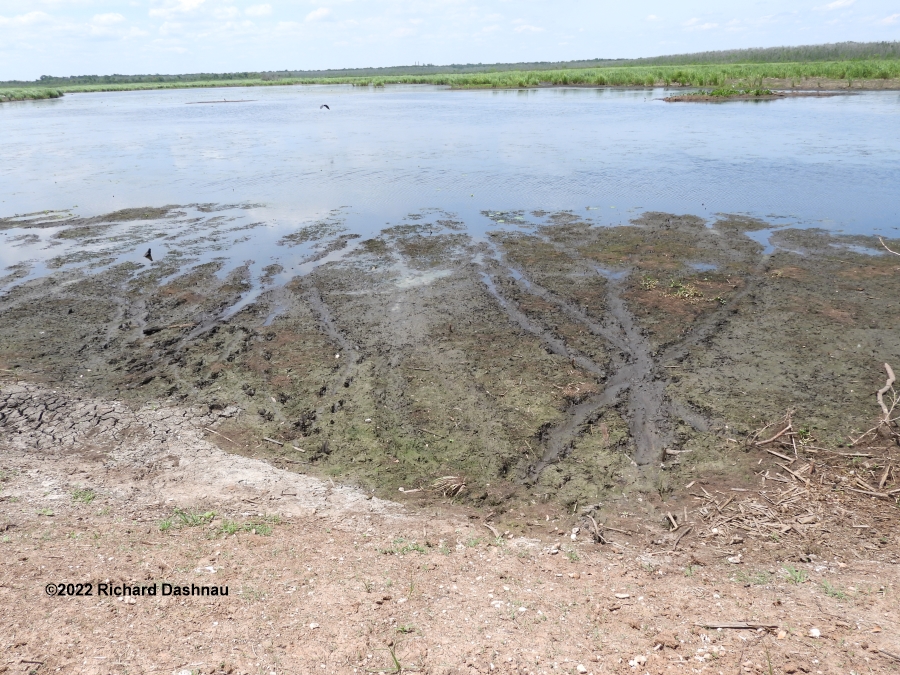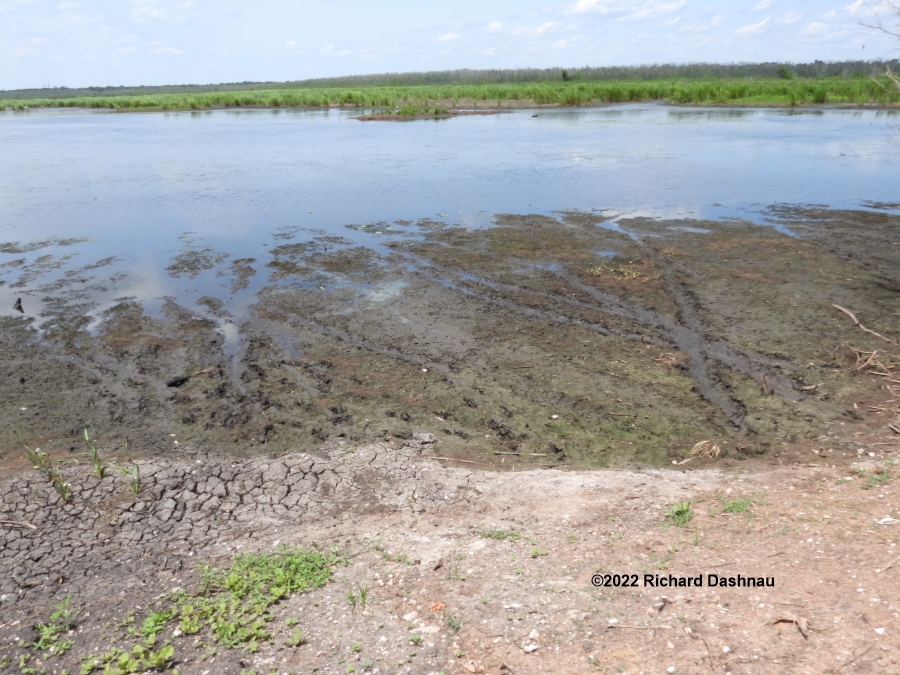The first picture, taken near the Observation Tower, shows how far the water has lowered, and the small channel made by drainage. This morning I noticed two things:
1) I had only seen a few alligators along the way, and 2) there were a LOT of wading birds gathered about 400 yards(maybe more) to the North.
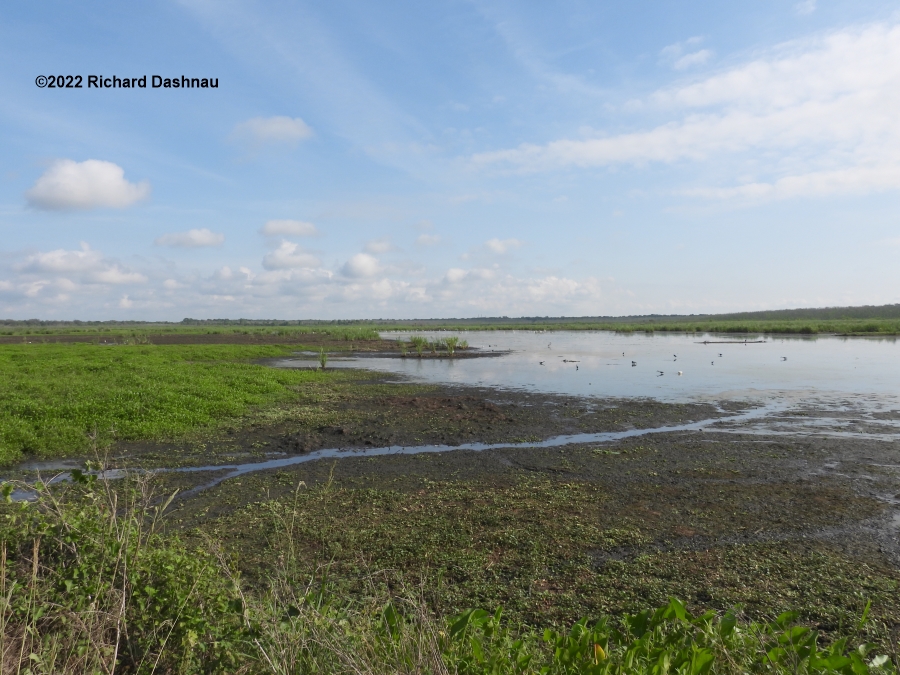
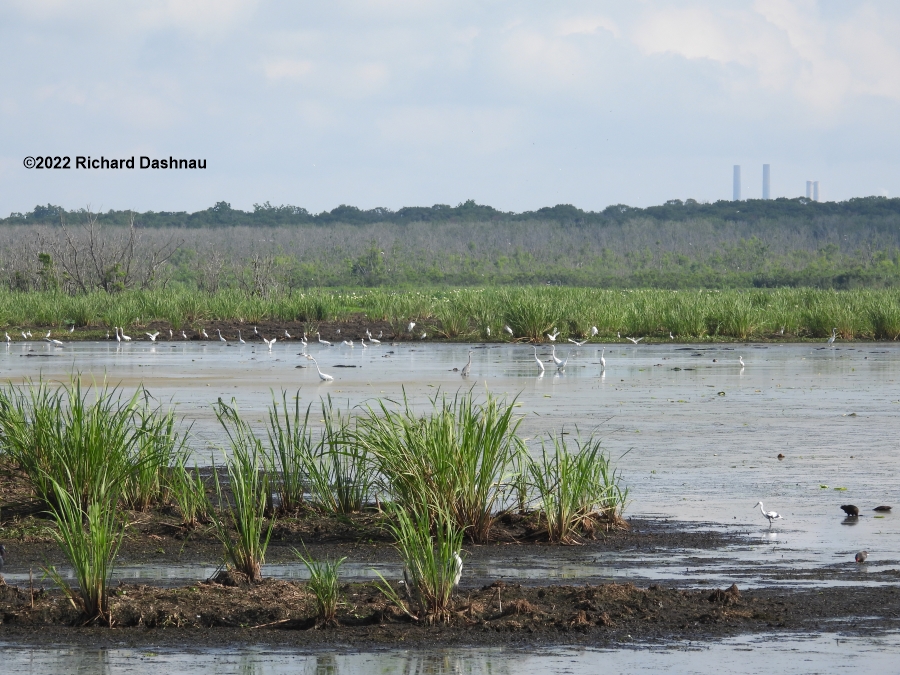
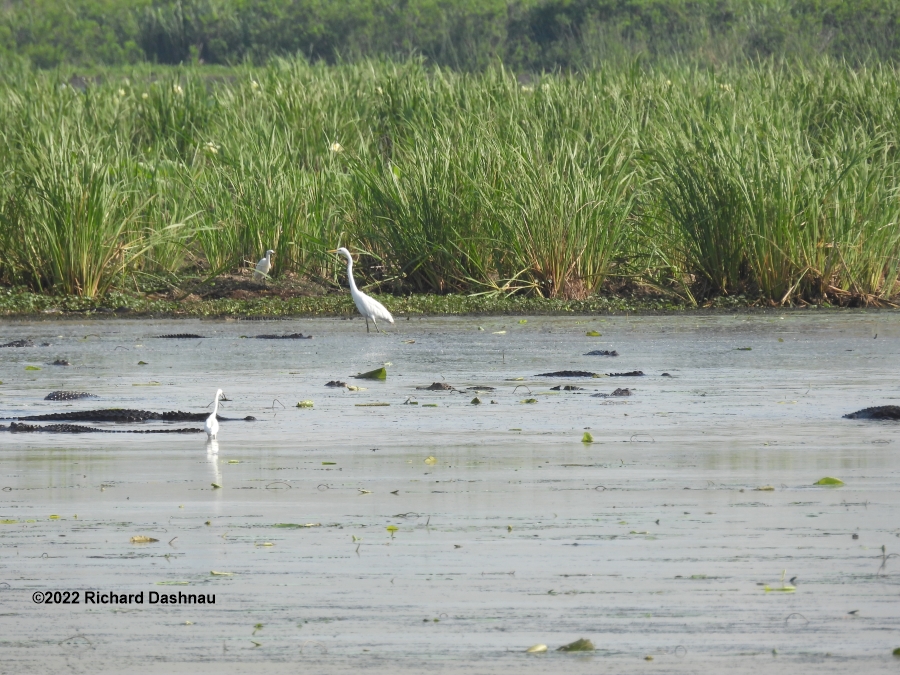
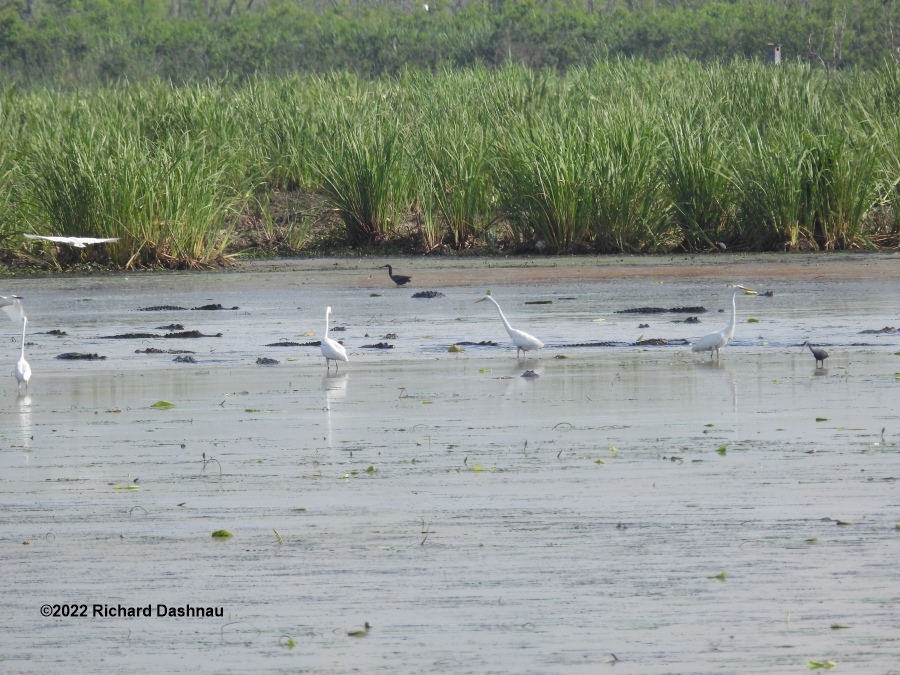
When I looked through binoculars, I saw the birds and many MANY dark forms among them. They were alligators! I reached out with the camera, and tried to document this amazing sight
with the pictures and video clips that I show here. These were the best I could get, and I've stitched some of the images together to give some idea of the scale of this event.
At my distance, I couldn't see much detail, so I moved on after capturing the images/video. But there was a lot of really cool things going on there. The edited video is here.

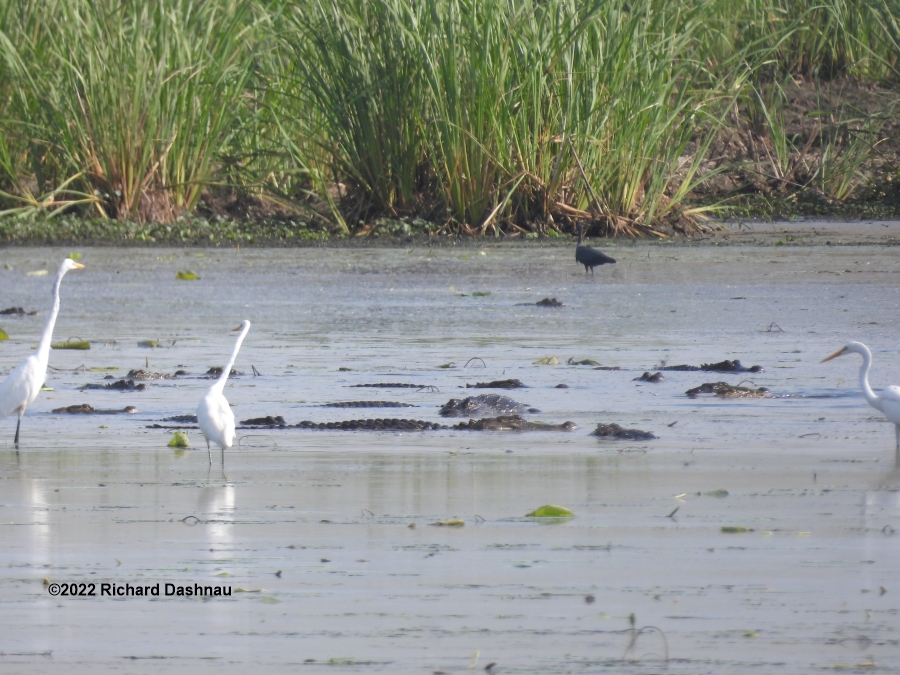
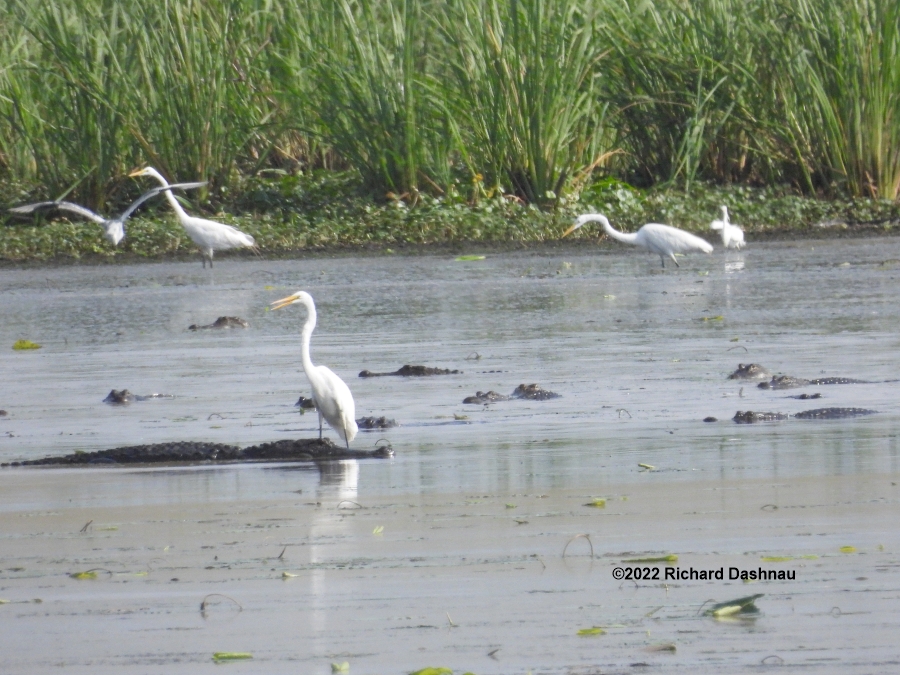
I have seen this situation at BBSP before, but usually during drought conditions developed over a longer period of time. In this case, the water level has dropped much faster.
As the volume of water got smaller, the amount of living space available to various animals living there also got smaller. That concentrated a lot of prey in smaller ponds, and the
shallow water made it easier to catch that prey. So, there's a big party for the predators! I don't know how the alligators find out about those parties--but they always show up.
While looked through my equipment and panned across, I estimated that there could easily be 100 alligators out there.

But what else is visible? All those alligators were feeding, and moving AMONG the wading birds. Wading birds were hunting, alligators were hunting--but the alligators weren't hunting the birds.
and there were all those alligators, swimming, jumping on prey, moving close together--and none of them were fighting over food. I have seen this before, and I guess that there was such a
large quantity of prey, that the predators' attention was on catching it, instead of chasing others away from it, or fighting over territory. Amazing sight--and another example of one of those
"ephemeral events" at BBSP that I can see, if I'm at the right place at the right time. The "resource sharing" seems to be in contrast to the behavior of the alligators that were in the smaller,
shallower puddles nearer the trail. Alligators in the smaller puddles were competitive, and chased each other and wading birds away. There was even fighting! I've already posted a series
of pictures showing 2 alligators that were fighting last week.

In one of my merged panorama pictures, I could count about 80. That image is just below, and I made it by taking frames from one of the videos I made panning across the scene
and then stitching them together. I shrank the original stitched images (they were huge files), I compromised to a size that allows them to remain clear if they are expanded
for viewing. And, just below that picture, there is a copy where I placed numbers near the alligators. I numbered up to 88...but closer inspection showed me that I may have missed
2--but I didn't want to renumber the image, or put the highest numbers among the other. Oh, well. Still...more than 80 gators in that spot! WOW!
For a little perspective...according to one source (Responses of American Alligators ( Alligator mississippiensis ) to Environmental Conditions: Implications for Population and
Ecosystem Monitoring (2015) by Eversole, Ballard, Wester, Powell.) , Pilant Lake covers 115.5 hectares (285 acre) with the "open" center about 29.1ha (71acre)
According to Google Maps, the trail distance from the Hoots bank of Pilant Lake to the ending at Elm Lake is 4,298 ft (.8mi or 1.31km). I've seen that Pilant Lake hydrates the North side
of those trails. When water in the lake recedes, various puddles form along the entire length, and many animals appear there.


Today, the party seemed to break up sometime in the afternoon. While moving West along the Spillway Trail around 2pm, I saw 2 alligators cross the trail at different times, too far ahead of
me to get pictures. When I reached the tower, some visitors there told me they'd seen another gator cross even further West. All of them were moving South--away from Pilant Lake.
These two images, taken about 10 yards west of the Tower, show a lot of the gator traffic--all those drag marks and footprints! The lake beyond was quiet. The party was over for the day.
Once again, the edited video is here.
